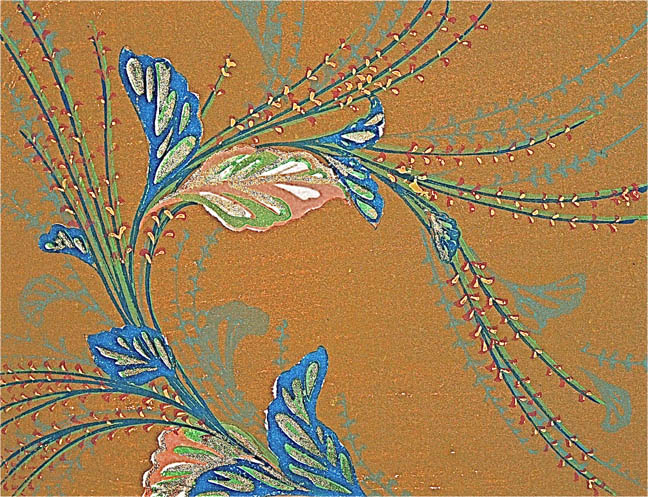

Title: This is a beautiful little wallpaper silk screen print from the 1800s
Shipping: $25.00
Artist: N/A
Period: Unassigned
History: N/A
Origin: N/A
Condition: Museum Quality
Item Date: 1800 to 1900
Item ID: 1401
This is a beautiful little wallpaper silk screen print which dates back to the 1800's. Antique custom screen print of a wonderful sample. This is an old tried and true method of screen printing. An old product for creating custom silk-screen paper stencils on paper. Wallpaper is a kind of material used to cover and decorate the interior walls of homes, offices, and other buildings; it is one aspect of interior decoration. They are usually sold in rolls and are put onto a wall using wallpaper paste. Wallpapers can come either plain (so that it can be painted), or with patterned graphics. Very few samples of the earliest repeating pattern wallpapers survive, but there are a large number of old master prints, often in engraving of repeating or repeatable decorative patterns. These are called ornament prints and were intended as models for wallpaper makers, among other uses.
Link: http://en.wikipedia.org/wiki/Wallpaper
Wallpaper, using the printmaking technique of woodcut, gained popularity in Renaissance Europe amongst the emerging gentry. The elite of society were accustomed to hanging large tapestries on the walls of their homes, a tradition from the Middle Ages. These tapestries added colour to the room as well as providing an insulating layer between the stone walls and the room, thus retaining heat in the room. However, tapestries were extremely expensive and so only the very rich could afford them. Less well-off members of the elite, unable to buy tapestries due either to prices or wars preventing international trade, turned to wallpaper to brighten up their rooms.
Early wallpaper featured scenes similar to those depicted on tapestries, and large sheets of the paper were sometimes hung loose on the walls, in the style of tapestries, and sometimes pasted as today. Prints were very often pasted to walls, instead of being framed and hung, and the largest sizes of prints, which came in several sheets, were probably mainly intended to be pasted to walls. Some important artists made such pieces, notably Albrecht Dürer, who worked on both large picture prints and also ornament prints intended for wall-hanging. Wallpaper printing techniques include surface printing, gravure printing, silk screen-printing, and rotary printing. Mathematically speaking, there are seventeen basic patterns, described as wallpaper groups, that can be used to tile an infinite plane. All manufactured wallpaper patterns are based on these groups. A single pattern can be issued in several different colorways.